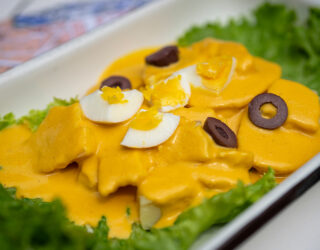Can a company monopolize a certain way of presenting its articles to the market without having a recognized exclusive right? Can this company prevent competitors from including positive messages, animation and ornamental elements such as arrows or hearts on their products? This is precisely the subject of the debate in judgment no. 27/2022, in the case brought by Mr. Wonderful Comunication S.L. against Clave Denia S.A., concerning interpretation of unfair competition laws.
Article 11.1 of Unfair Competition Law 3/1911 (UCL) freely allows the imitation of third parties’ business offerings as a general principle. It is an expression of the right to free enterprise as defined in the Spanish Constitution and its primary goal is to stimulate competition between companies to benefit the market and consumers.
In an exception to this general principle, however, the ability to freely imitate the offerings of competitors in the market may be restricted if an exclusive right is held. This means an intellectual property right, for example, in relation to which any potential infringement has to be examined from the standpoint of the specific legislation involved (i.e. patents, trademarks, designs, original works), and if applicable, it must be assessed whether the unfair competition rules apply secondarily.
While this is the general legislative scenario, Art.11.2. of the Unfair Competition Law states that “the imitation of offerings shall be deemed unfair if it is likely to lead to association by consumers with the offering or if it entails taking unfair advantage of a third party’s reputation or effort”. It must be stressed that the likelihood of association as envisaged in Art.11.2 UCL has to be interpreted carefully, because it is not the same as the definition of association in the field of trademark law (i.e. ground for opposition or revocation if the subsequent mark generates a likelihood of confusion and/or association among consumers with the earlier registered mark).
Under trademark law, the likelihood of confusion and/or association is used in relation to distinctive signs if the signs and the goods or services are identical and/or similar, insofar as they are associated with each other as if the signs come from a common business origin. Under unfair competition law, however, the likelihood of association must be analyzed as conducive to generating association among consumers with respect to the offering of another business, whereby “business offering or idea” means a “business creation”, a term that goes beyond distinctive signs to cover technical creations, purely aesthetical creations of form, the appearance of products or commercial establishments.
The case filed by Mr. Wonderful opened up a complex issue in a legal debate treading a fine line of interpretation and hinging on whether marketing rather than aesthetic styles are able to be protected exclusively by a single business in the market, in accordance with unfair competition laws. Protection of its “style” was the main goal of the lawsuit filed by Mr. Wonderful, a company selling gift items whose flagship brand is ALE-HOP®. Mr. Wonderful sought recognition from the courts that it held exclusive rights in the so-called “MR.WONDERFUL visual style”, which may contain, either together or separately, pastel hues, specific font types, animated objects on clouds, hearts, cacti or unicorns with witty phrases that form part of a saying, written on materializations of its offerings, i.e. mugs, notebooks and a wide variety of items that are available in the market and marketed by many different companies.
This context makes it necessary to look at the requirements that in the courts’ opinion have to be met to determine whether the imitation of a business offering is likely to lead to association among consumers. Firstly, the imitation must be (i) likely to lead to association or (ii) entail taking unfair advantage of a third party’s reputation. These conditions are not mutually dependent, meaning that only one of them needs to be met for unfair competition to be held to exist.
If we analyze the first scenario, the imitation must be of a principal rather than an accessory element, of what is known as the “competitive uniqueness” and must take place in relation to offerings belonging to the same or a similar business sector. Therefore, all the elements comprising the so-called “Mr. Wonderful style” with phrases of the type “I’m so sweet I’m good enough to eat” or “Today is a good day to have a good day”, the use of pastel hues and childlike lettering on animated objects should unmistakably identify the offerings of Mr. Wonderful, which aspires to hold exclusive rights in the “good vibes” paradigm in relation to presenting its aesthetic creations on gift products in the Spanish market. In this regard, Valencia Commercial Court no. 5 concluded that far from being a style, Mr. Wonderful, was a compendium of styles that already existed in the market, the prime example of which is the so-called Kawaii aesthetic. Consumers regard these as generic offerings not linked to a particular brand.
However, the second requirement, relating to taking unfair advantage of a third party’s reputation or effort, goes beyond association in identical commercial segments and could even apply where the unique offering is presented in different sectors, in view of the strong identity that the business has managed to achieve in the market in connection with its particular style when presenting its creations. In this regard, Valencia Commercial Court no. 5 concluded that “these are elements used by various different market players, classifiable within a trend, and exclusive protection cannot be enjoyed by just one of those players”.
At first instance Mr. Wonderful has not managed to evidence the existence of unfair imitation. However, the judgment has been appealed and we will have to wait for the decision by the Valencia Provincial Appellate Court to determine which of the two companies will come out on top.






